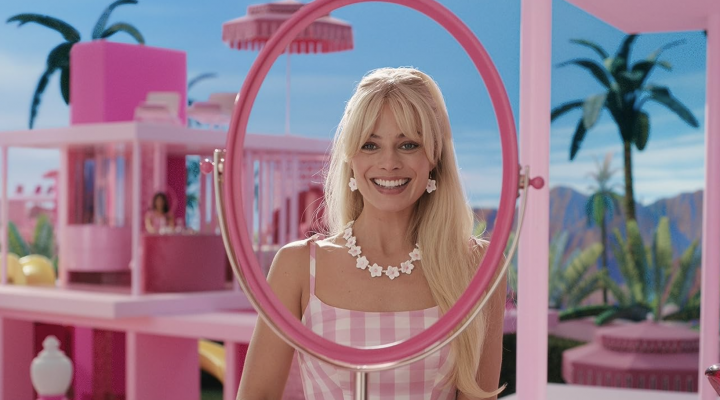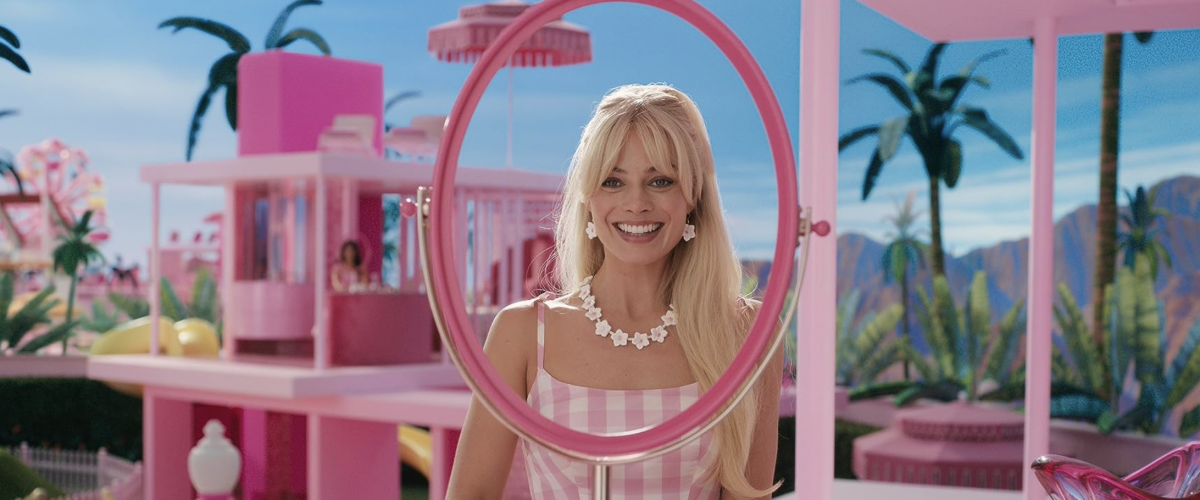Like many other women around the world, my sister, Olivia, and I went together to watch the new Barbie movie. Yes, we are both adults, but we chose to see this movie because we thought it would be a funny, unserious and lighthearted film that would make us laugh.
And yes, it did make us laugh.

Mallory Challis
However, among the many humorous plot points (including multiple moments of song and dance performances by Ryan Gosling as Ken), the film left viewers with a few thought-provoking messages. One of those messages is about the struggle of discovering your calling as a product of creation.
The plot
Barbie follows the journey of “stereotypical Barbie,” a doll (played by Margot Robbie) who lives in Barbieland and exists as a model of the original Barbie doll — the stereotypical Barbie. She does not have a designated job, nor does she have a deeply passionate relationship with her Ken-doll boyfriend. As the narrator explains, she is simply a Barbie who has a good day every single day.
And Ken, whose job is described as “beach” (not lifeguard), only has a good day when Barbie looks at him. Because he is just Ken, and this is Barbieland.
And while this is the case for all the other Kens in Barbieland, this is not the case for the other Barbies. Other Barbies have designated jobs or roles, all of which reflect real editions of the Barbie-doll series throughout history. For example, one Barbie is the president, while another is a doctor. Some Barbies are even mermaids.
“As a being who was created to be perfect and pretty, Barbie finds herself unsatisfied.”
Stereotypical Barbie, although she is supposed to have a good day every day, finds herself experiencing strange, unsettling and unusual things (such as having flat feet that do not perfectly fit into her heels). This prompts her on a journey to find the girl in the real world who is playing with her, as the reason for her malfunctions must be due to an issue with the connection between herself and this real girl.
To minimize spoilers, I will not reveal what happens to Barbie when she gets to the real world, although I will discuss how the movie ends.
Following her journey through the real world, Stereotypical Barbie and Just-Ken both have moments of self-discovery. As a being who was created to be perfect and pretty, Barbie finds herself unsatisfied. She begins to question what might happen if she is not pretty enough to be “Stereotypical Barbie” anymore. She was not created with a job or role; she was created simply to be pretty.
And Ken was created to be Barbie’s boyfriend. Who is he if she does not love him? Although Ken is a secondary character to Barbie, he also longs to be someone unique and meaningful.
Creator as a creative mother
And at the end of the movie, faced with the Barbie doll’s inventor, Ruth Handler (played by Rhea Perlman), Barbie asks to find meaning beyond the superficiality of her being. In an honest, personal conversation with her creator, she makes the decision to be more than a doll, stepping into the world of humans in the hopes she might be more than an object of someone’s imagination. She hopes to be one of the meaning-makers.
This decision is scary, sad and difficult, and the movie does not reveal what exactly Barbie is called to do in the real world. Yet Barbie is sure she wants to say “yes” to this calling. After living for so long in Barbieland, although it means she must give up its blind perfection, she chooses to walk away and seek out deeper meaning.
And her creator is pleased with this decision. Sure, Barbie is breaking free from the pretty, pink stereotypical image Handler had in mind when she created the doll, but control never was the intent of her creation. The choice to discover herself is Barbie’s, and as her creative mother, Handler lovingly stands aside to watch as she makes it.
“This choice Barbie makes is much like the choice we Christians make when we search for, discover and answer our callings.”
This choice Barbie makes is much like the choice we Christians make when we search for, discover and answer our callings.
Playing during what I discern to be Barbie’s “calling” scene is a song by Billie Eilish titled, “What Was I Made For?” In her lyrics, the artist describes the struggle of figuring out what it is she is supposed to be doing. She is confused and conflicted as she seeks to discover her own sense of calling.
“I don’t know how to feel, but someday I might,” she sings. She knows there is a purpose to her existence that she will someday find but cannot seem to put her finger on right now.
What does it mean to answer the call?
It is hard to discover ourselves in the real world, too.
Self-discovery requires a great deal of vulnerability, along with a willingness to make uncomfortable, unfamiliar or scary decisions. And to do this, we must do what Barbie does: Have a discussion with our Creator about who we are, who we were made to be and who we need to become to live our lives to the fullest.
But discovering (and saying “yes” to) a calling is not as simple as that sentence makes it seem.
In fact, as a student about to enter divinity school, I am often asked to reflect on my journey discerning my calling into ministry, to think about how this calling has looked different throughout each stage of my life and question how it will keep revealing more of itself as my life is molded by my continued spiritual journey.
And while I wish I could say I know exactly what it means when I say I am “called into ministry,” I do not. Just like Barbie, I have taken a step out of my comfort zone in search of what I know is a deep sense of calling and purpose, guided by conversations with my Creator, yet unsure of the exact journey on which I am embarking.
“Just like Barbie, I have taken a step out of my comfort zone in search of what I know is a deep sense of calling and purpose.”
I know I have said “yes” to the call. I know the crux of it all is love. And I know I have experience in writing, research and congregational ministry — three areas through which I could find a measurable, labeled purpose — yet the mystery of God’s call is not so categorical. It must be searched for, longed for and nurtured, while simultaneously possessed by a believer who is willing to take a risk without knowing what comes before them.
And just like Barbie, we too hope to be meaning-makers. In pursuit of our calling, we must have enough faith in the mystery to allow it to guide us in the direction of God’s purposeful love.
A friend at Wingate University once described for me her calling as “nonlinear,” meaning it did not follow a straight path and usually included unexpected twists or turns. It seems no matter how hard you try to maintain what you think the plan should be, your calling never will fail to surprise you, make you uncomfortable or cause you to think more deeply about who you are.
In the search for this call, we may echo Barbie or Billie Eilish as we ask of God the question, “What am I made to be?” When we have that conversation with our Creator, we must be willing to say, “I’m not sure, but here I am, Lord.”
Mallory Challis is a former Clemons Fellow with BNG and is a first-year master of divinity student at Wake Forest University Divinity School.
Related articles:
It’s time for Pastor Barbie | Opinion by Patrick Wilson
Why the patriarchy is hyperventilating over Barbie | Analysis by Rick Pidcock
Can Barbie help us create justice? | Opinion by Val Fisk
What was I made for? Not to be pretty or skinny | Opinion by Brianna Childs


